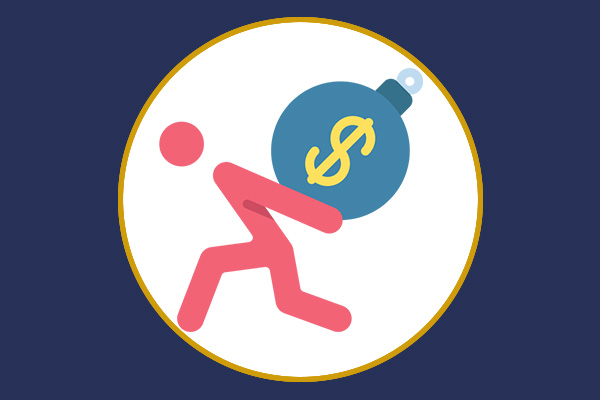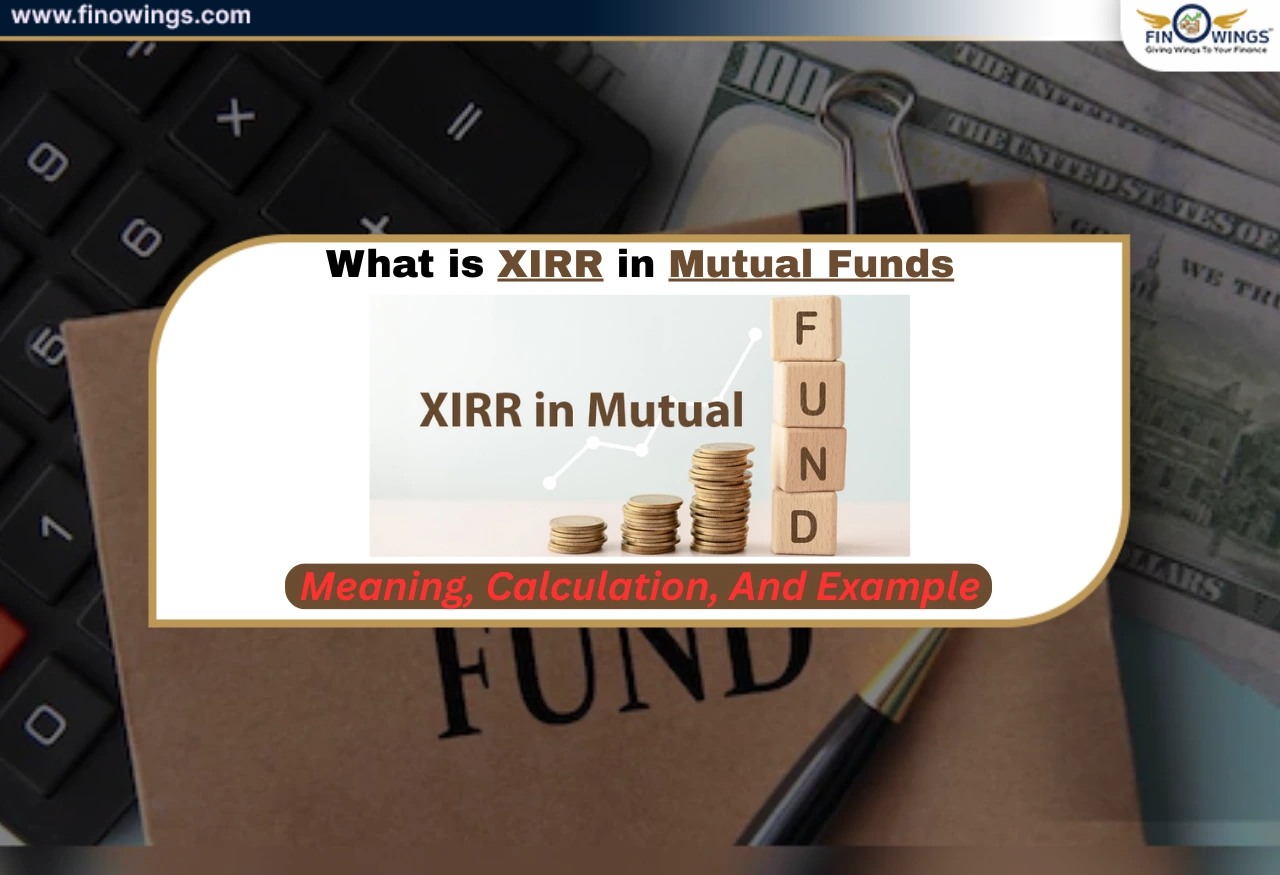Home >> Blog >> How To Calculate Debt-to-Capital Ratio, Formula & Example
How To Calculate Debt-to-Capital Ratio, Formula & Example

Table of Contents
Introduction
The world of investing is breathtaking. If a person wants to earn maximum return from his investment, he has to assess many aspects before making an investment decision. Of course, if you are an investor, you must have used several ratios to evaluate the financial health of any company before investing in it. One of the important ratios is the debt-to-capital ratio.
The debt-to-capital ratio allows you to compare a company's available capital and debt obligations to measure whether the company can withstand a downturn or not. Using this metric, you can avoid investing in a company with liquidity or solvency issues, which can spoil the portfolio. The debt-to-capital ratio gives you an idea of a business's solvency, capital structure, and degree of financial leverage. It helps investors to understand the background of a business. Today, through this blog, we will analyze the debt-to-capital ratio and do an in-depth analysis.
What Is The Debt-to-Capital Ratio?
The debt-to-capital ratio is a liquidity ratio that measures the total liabilities of a company or business against its total capital. Simply put, the debt-to-capital ratio refers to a company's operations, i.e., it tells how much the debt versus capital ratio is in the company's financing or operations. It allows the investor to understand the company's risk profile before investing. In addition, if you are a business owner, this ratio gives you an idea of how financially healthy your company is.
In other words, the debt-to-capital ratio measures how a company or business raises money through investors (investors' money in the form of debt). Therefore, investing in companies where a significant part of its capital comes through debt could be highly risky.
If you raise money by making investors part of your company's stock, you will certainly not be bound by recurring repayment, but the downside will be that your profits will be reduced. So, you must understand how well your business or a company can handle its sales revenue in a downturn. In that case, you can analyze using the debt-to-capital ratio formula.
What Is The Debt-to-Capital Ratio Formula?
The financial ratio of a business or company can be worked out using the debt-to-capital ratio formula given below:
Debt-to-Capital Ratio = Total Debt ÷ (Total Debt + Total Shareholder Equity)
It is a relatively simple calculation. For example, you can calculate the debt-to-capital ratio by dividing a firm's total debt by its total capital.
Total debt includes every outstanding interest loan, whether short- or long-term. This primarily includes cash flow loans, credit card loans, vehicle loans, equipment loans, outstanding lines of credit, and mortgages. Finally, total shareholder equity refers to the total value of the company or business. You will find all these figures on the company's balance sheet.
You need to consider a few points before calculating the debt-to-capital ratio. First, as you know, total debt includes all short and long-term liabilities. At the same time, shareholder's equity is the sum of the company's equity.
If you're finding debt-to-capital ratio calculations complicated or are having trouble, there's nothing to worry about. Nowadays, you will find a lot of D/C ratio calculators online. All you have to do is open the calculator and plug in the requested data, and you will get your debt-to-capital ratio in 5-10 seconds. Investors often use this calculator to understand the financial position of a company.
Calculation Of Debt-to-Capital Ratio With An Example
Now let us use an example to calculate the debt-to-equity ratio and see how it works.
Assume that Rohit is the owner of Vision Construction firm and has the following outstanding debts on his business:-
Credit card debt- 40 lakhs
Equipment Loan - 4 Crore
Mortgage - 8 crore
One line of credit - 24 lakhs
So Rohit's total debt is 40 lakh+ 24+lakh + 4 crore + 8 crore = 126,400,000.
And the total shareholder equity of the company is 20 crores, which Rohit has raised from his contributions and investors.
Let us now express the debt-to-capital ratio of Rohit's company in percentages using the formula.
Debt-to-Capital Ratio = Total Debt ÷ (Total Debt + Total Shareholder Equity)
Debt-to-Capital Ratio = 126,400,000 ( 126,400,000 + 200000000)
= 0.39, or 39% (exact data may vary)
Thus we can say that Rohit's Vision Construction firm is funded with capital. So investing in would be relatively less risky. Had the company's debt-to-capitals been 51% or more, we could say that Vision Construction's operations are funded with debt rather than capital. It simply means that investing in the company can be quite risky.
When Does The Debt-to-Capital Ratio Matter?
To understand the financial position: By using the debt-to-capital ratio, you can better understand the financial health of a business. Therefore, it can prove an excellent tool for you as an investor. If a company's debt-to-capital ratio is very high, it may indicate it is heavily indebted. That is, investing in it can be quite risky.
A good debt-to-capital ratio is between 1 and 1.5, indicating that a company's debt and equity are balanced.
Rohit's Vision Construction firm had a debt-to-capital ratio of 0.39. So he can borrow more if he wants.
To get a loan: The debt-to-capital ratio matters a lot when you apply for financing your company. No lender gives a loan to anyone without a background check. The lender may ask you to view the company's financial statements and inquire about outstanding loans. They will use that information to calculate how much debt the company has versus how much capital you have. If your company already has excess debt, the lender may refuse to give you the loan.
To raise money from investors: Any company that wants to play big in the market needs to raise money from investors. Investors check the debt and equity of the company before investing in any company. It will help the investor to understand the risks and make the right decisions.
How To Manage Your Debt-to-Capital Ratio?
Now you know how the debt-to-capital ratio works and why it matters. Let us now understand how to manage debt-to-capital.
When working as a firm, you must check your ratio at least once a quarter to avoid financial troubles. If you regularly check the debt-to-capital ratio, you can know how much the company's debt and capital are. If the company's debt exceeds the company's capital, you can act quickly to increase financing and try to improve your ratio.
Limitations Of Debt-to-Capital Ratio
Of course, the debt-to-capital ratio has a lot of advantages. Still, at the same time, there are some limitations of debt-to-capital ratio analysis, which you need to understand, and it is important to know its limitations. The debt-to-capital ratio is affected to some extent by the company's accounting practices, as your company's accounting practices and the current market value of the financial statements are likely to be based on or affected by historical cost accounting. And if you only use these entries to work out the debt-to-capital ratio, you may not get an accurate estimate of actual financial leverage. Therefore, little care needs to be taken while analyzing the debt-to-capital ratio. Because if you only use this tool to know the debt and equity of a company, then you might not know the exact values of the company.
Bottom Line
Investors tend to find the concept of debt-to-capital ratio too complicated, but it is so. The debt-to-capital ratio is a simple concept that will enable you to choose the right investment option. If you are a new investor and having trouble working out a debt-to-capital ratio, you can use the D/C calculator for the debt-to-capital ratio.
Investing in companies with a high debt-to-capital ratio can be problematic for you, as such companies are often affected by market volatility or recession. At the same time, we would like to point out that the debt-to-capital ratio has some limitations, so don't just use this ratio to calculate a company's financial position. You must also keep other aspects in mind before investing in a company.
Author
Frequently Asked Questions
In simple words, debt-to-capital ratio refers to a company's operations, i.e., it tells how much the debt versus capital ratio is in the company's financing or operations. It allows the investor to understand the company's risk profile before investing.
A good debt-to-capital ratio is between 1 and 1.5, indicating that a company's debt and equity are balanced.
The debt-to-capital ratio is affected by the company's accounting practices. And the current market value of the financial statements are likely to be based on or affected by historical cost accounting. If you only use these entries to calculate debt-to-capital ratio, you may not get an accurate estimate of actual financial leverage.




.webp)











